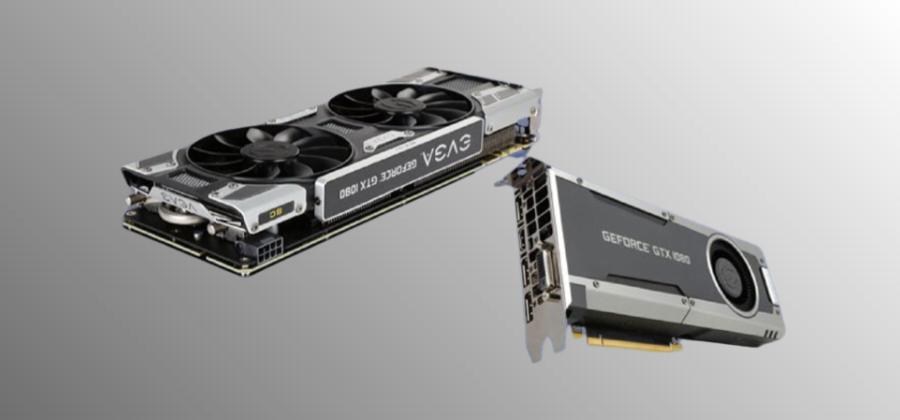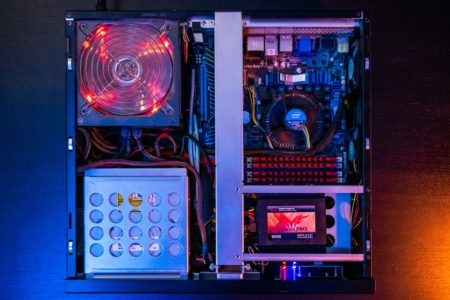The power button on a computer’s CPU is an essential component that allows users to turn their system on or off quickly. However, there are instances where the power button may malfunction or become unresponsive, leaving users unable to start their computers. It can be frustrating, especially when you need to use your computer urgently.
Fortunately, alternative methods exist to turn on a CPU without relying on the power button. This article will explore various approaches to help you overcome the power button issue and get your computer up and running again. These alternative methods can provide a solution, whether it’s a physically damaged power button, a loose connection, or any other matter affecting its functionality.
We will walk you through step-by-step instructions on how to turn on cpu without power button which includes troubleshooting the power button problem and utilizing alternative methods to power your CPU. From using the reset button on your computer case or motherboard to shorting the power on/off pins on the motherboard, we will cover different techniques that can help you overcome the power button obstacle.
So, if you’re facing a power button issue and need to turn on your CPU, continue reading to explore the alternative methods to get you back in action.
Checking for Potential Power Button Issues
When faced with a non-functional power button, it is essential to investigate potential causes before resorting to alternative methods for turning on your CPU. Here are some steps to help you identify and troubleshoot potential power button issues:
First, visually inspect the power button for any physical damage. Look for cracks, dents, or loose parts. Carefully examine the button’s surface and surrounding area for any signs of wear or malfunction.
Next, gently press the power button multiple times to check for responsiveness. Pay attention to how the button feels when pressed – it should have a firm but smooth action. If the button feels sticky, unresponsive, or loose, it may indicate an internal issue.
Ensure that the power button is securely connected to the motherboard. Power off your CPU and unplug it from the electrical outlet. Open the computer case and locate the cable connecting the power button to the motherboard. This cable is typically labeled “Power SW” or similar. Verify that the connection is secure and properly seated in the corresponding header on the motherboard.
Check if the power button is stuck or obstructed. Sometimes, dirt, debris, or accumulated dust can hinder the button’s functionality. Inspect the area around the power button for any visible obstructions or foreign objects. If present, carefully clean the area using compressed air or a soft cloth.
If you have access to another power button of the same type, consider temporarily swapping them to test if the issue lies with the button itself. It can help determine if the problem is specific to the power button or related to the motherboard or wiring.
Using the Reset Button as an Alternative
If your power button is not functioning correctly, another option to consider is utilizing the reset button on your computer case or motherboard. The reset button can be repurposed temporarily as an alternative means to power your CPU. Here’s how you can use the reset button:
Locate the reset button
- In most computer cases, the reset button is usually near the front panel’s power button. It is typically smaller and may have a different shape or icon.
- Check your motherboard for a dedicated reset button if you can’t find it on the front panel. It is commonly located near the other headers or connectors.
Power off your CPU
- Ensure your computer is entirely powered off by shutting it down through the operating system or unplugging it from the electrical outlet.
Understand the function of the reset button
- The reset button is primarily designed to restart the computer or perform a system reset. However, we will repurpose it to initiate the boot process.
Press and hold the reset button
- Press and hold the reset button for a few seconds, as you would typically restart your computer.
- Continue holding the reset button until you notice the computer powering on. This process may take a few seconds.
Release the reset button
- Once the computer begins to power on, release the reset button.
Monitor the startup process
- Observe your computer as it starts up. You should see the usual signs of the system booting, such as fans spinning and lights illuminating.
Troubleshooting tips
- If the CPU fails to power on using the reset button, ensure it is appropriately connected to the motherboard.
- Check your motherboard’s manual or manufacturer’s website for specific instructions or variations in the reset button usage.
Using the reset button as an alternative method to power your CPU can be a temporary solution until you can resolve the power button issue. However, it is essential to note that this method may only be available on some computer cases or motherboards. If you encounter difficulties or the reset button does not work, you may need to explore other alternatives or seek professional assistance.
Utilizing the Motherboard’s Power On/Off Pins
If your power button is malfunctioning, an alternative method to turn on your CPU is by utilizing the power on/off pins on the motherboard. These pins serve as the connection point for the power button and can be manually activated to power the computer. Here’s how you can use the motherboard’s power on/off pins:
Power off your CPU
- Ensure your computer is entirely powered off by shutting it down through the operating system or unplugging it from the electrical outlet.
Locate the power on/off pins
- Open the computer case and carefully examine the motherboard. Look for a set of pins labeled “Power SW” or “Power Button.”
- These pins are typically situated near the bottom-right corner of the motherboard or close to the front panel connectors.
Identify the correct pins
- Check the motherboard’s manual or manufacturer’s website for the exact location and labeling of the power on/off pins. Different motherboards may have varying pin layouts.
- The power on/off pins usually consists of two or two-pin connectors. The “PWR” or “+/-“ may indicate the power button’s connection points.
Short the power on/off pins
- Take a small conductive object, such as a screwdriver or a jumper cap, and carefully touch both powers on/off pins simultaneously.
- The purpose is to create a temporary connection that mimics pressing the power button.
Monitor the startup process
- Once you have shorted the power on/off pins, the CPU should begin to power on.
- Observe your computer as it starts up, looking for signs of the system booting, such as fans spinning and lights illuminating.
Troubleshooting tips
- If the CPU does not power on when shorting the power on/off pins, double-check that you have correctly identified the pins and made proper contact.
- Ensure that you touch both pins simultaneously and that the conductive object makes good contact with the pins.
Using the power on/off pins on the motherboard provides a manual method to power your CPU when the power button is not functioning. However, exercise caution and precision while shorting the pins to avoid damaging any components. If you need help with the pin configuration, consult your motherboard’s manual or seek professional assistance.
Using Wake-on-LAN (WoL) Feature
If your power button is not working and you can access another device on the same network, you can use the Wake-on-LAN (WoL) feature to power your CPU remotely. WoL enables you to send a network signal to wake your computer from a sleep or powered-off state. Here’s how you can use the Wake-on-LAN feature:
Verify compatibility and enable WoL:
- Check if your motherboard and network interface support Wake-on-LAN. Consult your motherboard’s manual or visit the manufacturer’s website for information on WoL compatibility.
- Access the BIOS settings of your motherboard by restarting your computer and pressing the designated key during the startup process (e.g., Del, F2, F10).
- In the BIOS settings, navigate to the “Power Management” or “Power Options” section and locate the WoL setting. Enable it if it is disabled.
Prepare the sending device:
- Ensure that another device (e.g., computer, smartphone, tablet) is connected to your CPU’s local network.
- Install a WoL application or software on the sending device. Various WoL apps are available for operating systems, such as “Wake on LAN” for Android or “Depicus Wake On LAN” for Windows.
Obtain the MAC address of your CPU:
- Find the MAC (Media Access Control) address of the network adapter on your CPU. You can typically locate this information in your operating system’s network settings or network adapter properties.
- Note the MAC address, as you will need it to wake your computer using WoL.
Configure the WoL app:
- Launch the WoL app on your sending device and enter the MAC address of your CPU.
- Provide the IP address or hostname of your CPU. Suppose you don’t know the IP address. In that case, you can usually find it in the network settings of your operating system or by running the command “ipconfig” (Windows) or “ifconfig” (macOS/Linux) in the command prompt or terminal.
Send the WoL signal:
- Initiate the WoL signal by selecting the “Wake” or “Send” button in the WoL app.
- The WoL signal will be broadcasted to your CPU’s network adapter, waking it up from a powered-off state.
Monitor the startup process:
- Once the WoL signal is sent, monitor your CPU to see if it powers on.
- It would be best to observe the usual signs of the system booting, such as fans spinning, lights illuminating, and the operating system loading.
Remember, for Wake-on-LAN to work, your CPU must be connected to a power source and have an active network connection. Some routers or firewalls may require configurations to allow WoL packets to pass through the network. Consult your router’s documentation or seek assistance from your network administrator if you encounter any issues.
Employing a Remote Power Switch
Another alternative to consider if your power button is not working is employing a remote power switch device. A remote power switch allows you to control the power supply of your CPU from a distance, eliminating the need to press the power button physically. Here’s how you can use a remote power switch:
Purchase a remote power switch:
- Research and select a remote power switch device that meets your CPU’s requirements.
- Remote power switches are available in various forms, including Wi-Fi-enabled power strips, smart plugs, or dedicated remote power switch devices.
Install and configure the remote power switch:
- Follow the manufacturer’s instructions to install and set up the remote power switch device.
- Typically, this involves connecting the device to a power outlet and connecting your CPU’s power cord to the designated socket on the remote power switch.
Connect to the remote power switch:
- Depending on the type of remote power switch, you may need to connect it to your home network or configure it with a mobile app.
- Follow the instructions to connect the remote power switch and your smartphone, computer, or other control devices.
Power on/off your CPU remotely:
- Once the remote power switch is set up and connected, the associated mobile app or control interface can turn your CPU on or off remotely.
- Open the app or interface and locate the control options for the connected remote power switch device.
- Select the appropriate option to power your CPU remotely.
Monitor the startup process:
- After sending the command to power on your CPU using the remote power switch, monitor your computer to ensure it starts up properly.
- Observe the usual signs of the system booting, such as fans spinning, lights illuminating, and the operating system loading.
Note: Ensure your remote power switch device is configured securely and only authorized individuals can control it. Additionally, keep the remote power switch device and its associated control devices in a safe and secure location.
Conclusion
In conclusion, encountering a non-functional power button on your CPU can be frustrating, but you can employ several alternative methods to power your computer. Following the troubleshooting steps outlined in this article, you can identify potential power button issues, check for physical damage, ensure proper connections, and use alternative methods to initiate the boot process.
If the power button is not functioning, you can use the reset button on your computer case or motherboard as a temporary workaround. Alternatively, you can utilize the power on/off pins on the motherboard by shorting them with a conductive object. These methods require caution and precision to avoid any damage.
The Wake-on-LAN (WoL) feature also enables you to remotely power your CPU by sending a network signal from another device on the same network. This feature requires WoL compatibility, a proper configuration in the BIOS, and a WoL-enabled app or software.
Another option is to employ a remote power switch device, allowing you to control the power supply of your CPU remotely. This method provides convenience and flexibility, eliminating the need for physical interaction with the power button.
With these alternative methods at your disposal, you can power on your CPU even when faced with a non-functional power button, ensuring you can continue using your computer with minimal disruption.
Frequently Asked Questions
What should I do if my power button is not working?
If your power button is malfunctioning, try a few troubleshooting steps. First, visually inspect the button for any physical damage and ensure it is securely connected to the motherboard. If the button appears damaged or unresponsive, you can use alternative methods such as the reset button, the power on/off pins on the motherboard, the Wake-on-LAN (WoL) feature, or a remote power switch device.
Can I use the reset button as a temporary power button?
You can use the reset button on your computer case or motherboard as a temporary workaround to power your CPU in certain situations. You can initiate the boot process by pressing and holding the reset button for a few seconds while the computer is powered off. However, it is essential to note that this method may not be available on all computer cases or motherboards, and it should only be used as a temporary solution until you can address the power button issue.
What is Wake-on-LAN (WoL), and how does it work?
Wake-on-LAN (WoL) is a feature that allows you to power remotely on a computer over a network. It sends a network signal called a WoL packet to the computer’s network adapter. The computer’s network adapter remains partially powered even when the system sleeps or is powered off. When the WoL packet is received, it triggers the network adapter to wake the computer and initiate the boot process. To use WoL, both the motherboard and network adapter must support the feature, and you need to configure the BIOS settings and use a WoL-enabled app or software to send the WoL signal.










